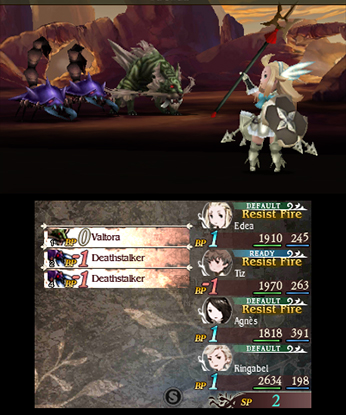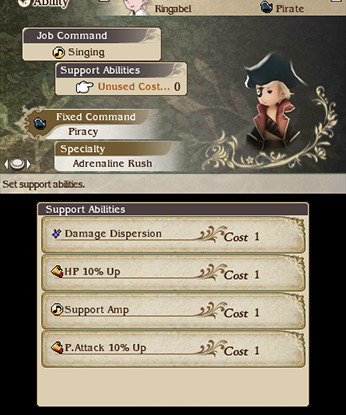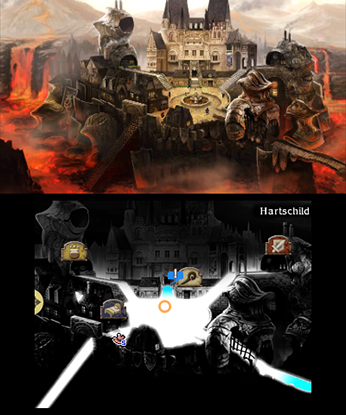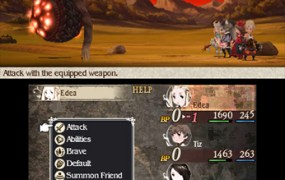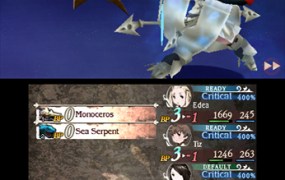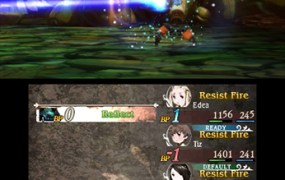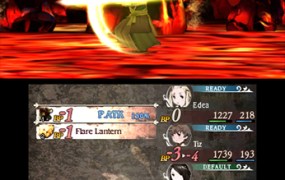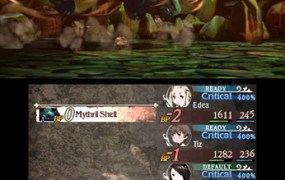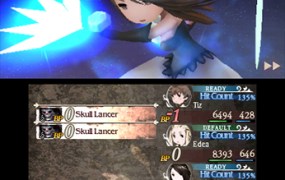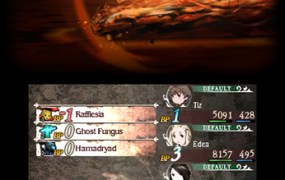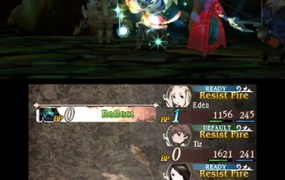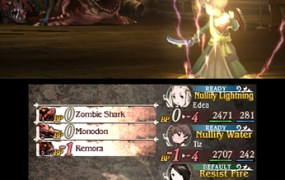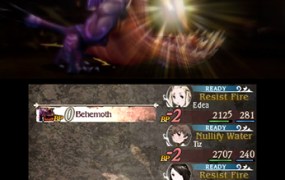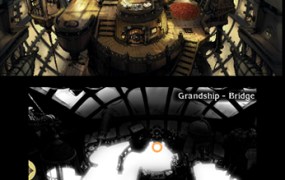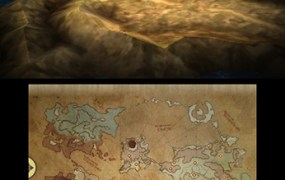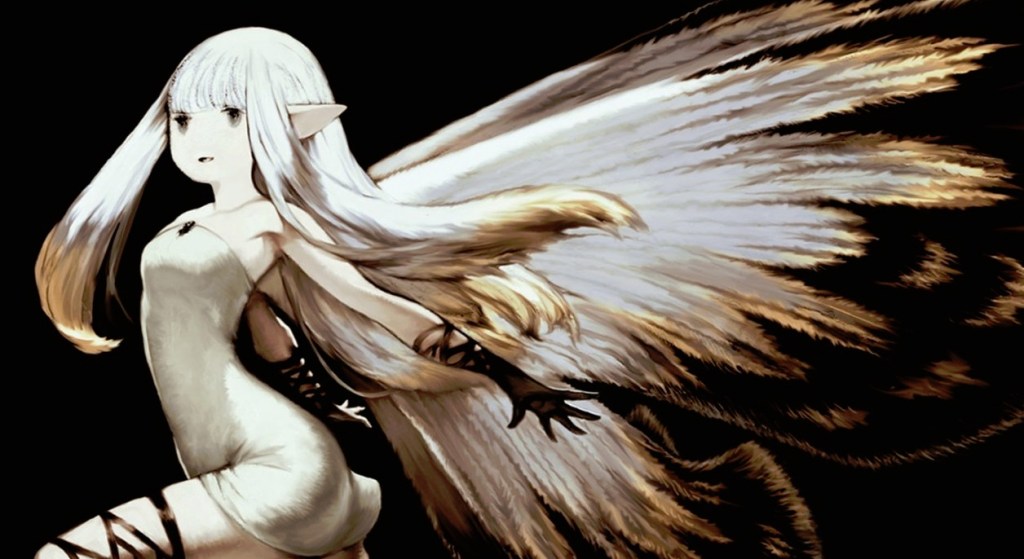Check out our Reviews Vault for past game reviews.
If you hate what Final Fantasy has become, then you’ll love Bravely Default.
Bravely Default is a Japanese role-playing game coming Feb. 7 for the Nintendo 3DS. It doesn’t have a chocobo or moogle in sight, you won’t hear the classic victory fanfare, and the clothing lacks an abundance of zippers.
But make no mistake: This is a Final Fantasy game. In fact, it’s like an alternate reality for the franchise. This is one road the series could have taken before it turned its back on traditional role-playing mechanics and fantasy settings.
Now, I am not someone who thinks that Final Fantasy ruined itself. I actually liked the much-criticized Final Fantasy XIII, and the recent Final Fantasy XIV: A Realm Reborn is currently my favorite massively multiplayer role-playing game. But Bravely Default tops all of them. It not only brings back some of the series’ classic features, like a turn-based battle system and a large overworld filled with towns and dungeons, but also plenty of interesting, new ideas that make it more than a nostalgia act.
What you’ll like
An interesting battle system
Initially, Bravely Default’s battle system looks a lot like the typical, classic JRPG standard. Characters take turns attacking, defending, casting magic, using items, or activating special abilities. But Bravely Default has two major actions, appropriately called Brave and Default, that add a significant layer of depth.
Using Default will increase your defense, but it’ll also stockpile your unused turn (represented as BP). Each character also receives a single point of BP at the start of each new round. Brave lets you use a single BP to add an action to your turn (up to four times). This means that in a single wave you can dish out four attacks, heal your party while also dealing out a little damage, or buff up your entire group with protective magic.
You can also use Brave to put yourself into a bank of negative BP, which is great for dishing out a lot of damage at the beginning of a fight, but it can backfire if you don’t destroy all your enemies and find yourself getting pummeled while you wait to get back into positive BP.
This leads to a lot more strategy then you’d find in more traditional battle systems. Do you want to keep using Default and stock up on BP while defending against stronger attacks, or should you use Brave early and often to attack as soon as you can? It’s a lot more complicated then simply attacking, healing, and exploiting elemental weaknesses, which is what a lot of the classic Final Fantasy games basically boiled down to.
You also have SP (you keeping up with all these acronyms?), which you gain one of for every eight hours the game spends in sleep mode. You can save up to three SP, which you can then exchange to cast an action anytime you want during a battle. That doesn’t sound like a lot, but the ability to act out of turn, even rarely, can have a huge impact. This means that you can heal yourself and save your party from death moments before an enemy delivers a devastating attack. It’s a fail-safe that got me out of a lot of scenarios that would have ended in defeat.
A flexible progression system
As in most JRPGs, your characters grow stronger by earning experience points and leveling up. However, you level each of your character’s classes, called jobs, separately (you earn experience and Job Points at the end of each battle). Earning new job levels unlocks new active and passive abilities (you can only equip so many of the passive ones at a time). You can also switch between jobs at will outside of battle.
Now, the job system is familiar to fans of Final Fantasy. Square has featured it Final Fantasy III, Final Fantasy V, Final Fantasy Tactics, and many others, sometimes under different names. The variation in Bravely Default is most like the one in Final Fantasy V, which was one of my favorite progression systems in any JRPG. You can not only switch easily between classes but also use certain abilities you learned from one job while in the other.
This means that you can have a Black Mage who also knows support magic from the Performer job, or you can have a damage-dealing Pirate who still has all of the defensive bonuses and abilities from the Knight class. It’s an incredible amount of potential customization, especially since Bravely Default has 24 jobs to play with, each with a unique feel and desirable advantages.
Beautiful aesthetics
Bravely Default gets a lot a beauty out of the 3DS’s modest hardware. Even without the fancy HD graphics of console JRPGs like Ni No Kuni and Final Fantasy XIII, Bravely Default uses a lot of artistry to impress and immerse you in its familiar fantasy world.
But the soundtrack really elevates Bravely Default over any technical hurdles that would’ve prevented it from reaching epic status. It evokes some of Final Fantasy composer Nobuo Uematsu without sounding derivative. Like much of Bravely Default, the score is simultaneously classic and modern.
It’s an impressive presentation, especially with the surprising amount of (mostly good) voice acting.
Incentive to StreetPass
StreetPass is the 3DS feature that lets two of the handhelds talk to each other when in close proximity. In Bravely Default, each person you meet in StreetPass adds a new villager to a developing town that you’re in charge of building. You can use villagers to create new buildings, which will then give you access to new items and special moves. The more villagers you have, the quicker you can build.
You can also summon another Bravely Default player in battle, letting them unleash a powerful attack. You can conversely set up a move of your own to send out to anyone you StreetPass with.
It’s a great use of one of the 3DS’ most unique features. The items I unlocked for sale were especially useful early in my adventure, and the attacks I summoned from friends helped immensely during boss fights. And if you’re worrying that you’ll miss out if you don’t have any friends to StreetPass with, don’t worry. You can also gain a few random friends once a day, so you can still get villagers and other characters to summon.
It’s a lot of game
I’ve beaten every main-numbered Final Fantasy game, and each one has taken no more than 30 hours for me to finish. I’m further than that in Bravely Default, and I still haven’t finished the main story. The length feels closer to a Shin Megami Tensei than a Final Fantasy.
You also have plenty of side quests you can tackle, most of which reward you with new jobs (which you’re definitely going to want). Plus, you can spend a lot time grinding if you want to max out as many classes as possible, which is conveniently easy to do thanks to features that let you increase the enemy encounter rate and the speed of battle animations. You can also repeat your last turn with the press of a single button.
What you won’t like
Airy
Airy is a little fairy (wow, that sounds like the start of a terrible nursery rhyme) who travels with you just to complain, nag, and annoy. She’s like Navi from The Legend of Zelda: Ocarina of Time except you have to hear entire sentences from her instead of the occasional shout of “Listen!”. Airy sounds like a 9-year-old girl begging for her father’s attention. She’s an annoying trope of a character who, despite gracing the game’s cover, no one would have missed.
She’s especially annoying since the four playable characters are all likable and play off each other so well. Airy, however, adds nothing to the group other than to occasionally spout exposition and to remind people that they need to save the world (yeah, we remember).
Conclusion
Bravely Default’s decision to transform turns into a currency adds a layer of complexity to classic JRPG combat, and the flexible job system gives you tons of room for customization. Honestly, if you’re a fan of the genre, then there’s little here not to like.
Bravely Default is the best JRPG you could play on the 3DS. If I were Square Enix, I would give this same team a Final Fantasy-sized budget and let them make a proper, numbered entry in the series.
Score: 94/100
Bravely Default comes out on the Nintendo 3DS on Feb. 7. The publisher provided GamesBeat with a code of the game for the purposes of this review.

